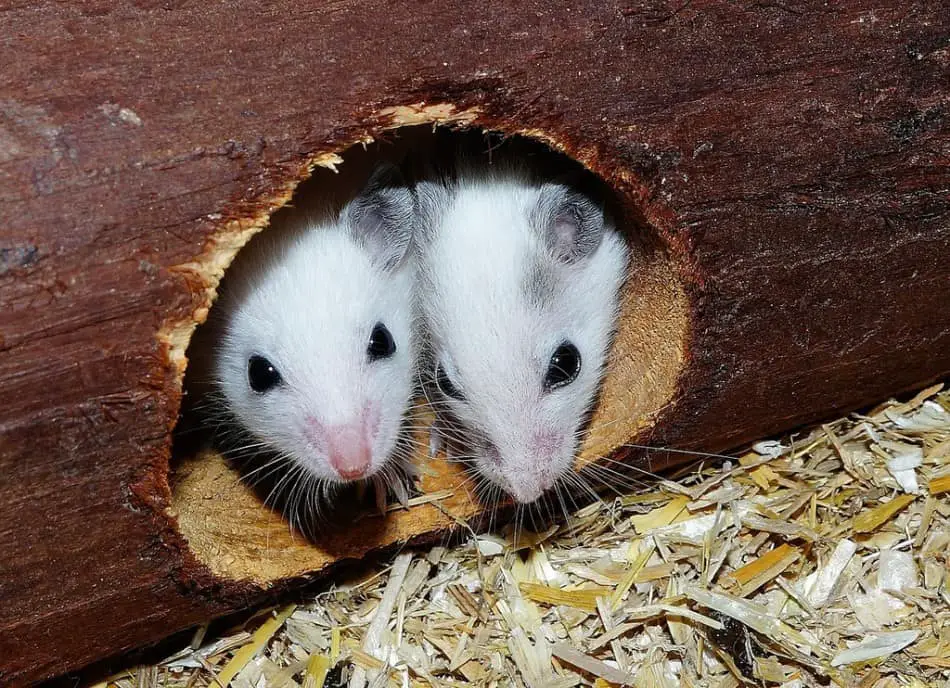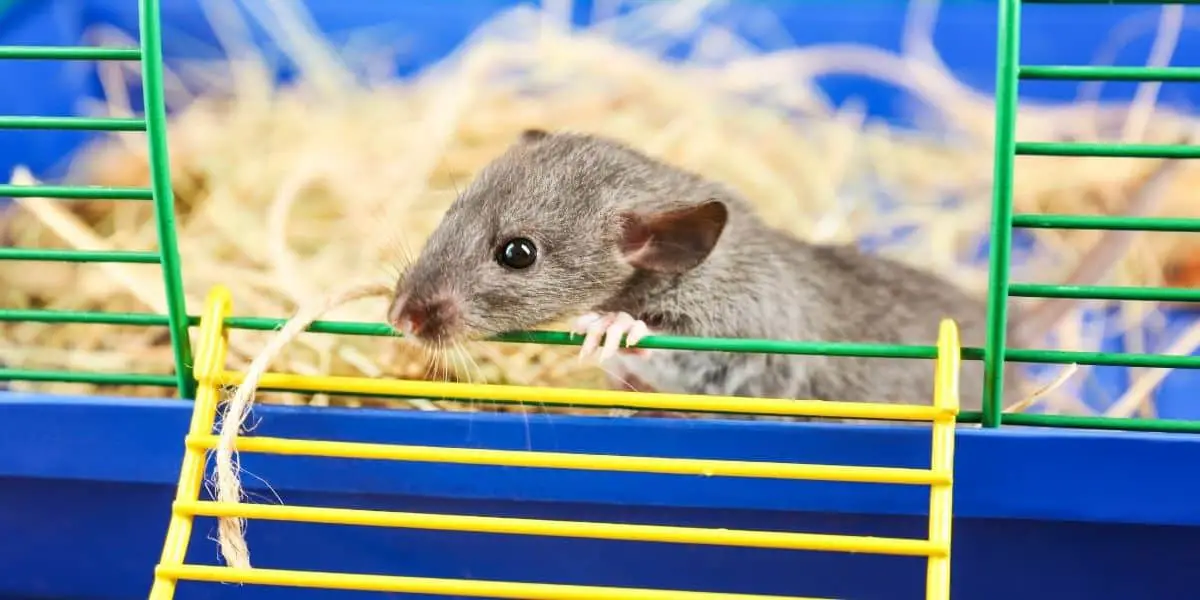With so many different options for bedding material available it’s often a little confusing. Trying to balance cost against the best product for your mouse can be tricky.
We all want the best for our pets but also need to work within a budget for the cost of their care.
So, is there a cheap option which still offers warmth, comfort and hygeine?
Let’s take a look
Table of Contents
What bedding options are available for pet mice?
Some common bedding options used for pet mice include
- Newspaper shreds
- Aspen shavings
- Pellet bedding
- Straw or hay
- Hemp
- Coconut husk
Mice can use various types of bedding
Mice need three different types of bedding – substrate, bedding, and litter.
Substrates
The substrate is the bedding material that goes at the bottom of your cage. This bedding must be absorbent to soak up urine and hold it away from your mice so that they are not sitting on top of damp urine-soaked bedding.
The substrate is the material that your mice will dig in and tunnel through.
Nesting
Nesting material is exactly what it sounds like – the material that your mice will use to create a nest!
Nesting material should be a combination of different material types that allow mice to build a more complex nesting area.
Litter
Litter is a must for the corners of your mice cage to create a toilet area and to reinforce toilet training. Litter has to be very absorbent and draw moisture away from the substrate.

Best Bedding for pet mice
Paper
Paper – specifically newspaper is commonly thought to be one of the best substrate options for mice. The truth is, though, that it is not as absorbent as other materials and creates quite a mess when wet!
A paper substrate does not wick away moisture so much as it simply absorbs it and holds it which makes your cage smell and exposes your mice to damp substrate.
Wood
Wood can be a good substrate option for mice but only when using heat-treated dust extracted wood substrate.
It is crucial to use heat-treated wood substrate to avoid toxic phenols that are reduced significantly during heat treating. If exposed to high levels of phenols, mice can develop metabolic health concerns.
It is also important to use a dust-extracted wood substrate to reduce the dust thrown up by bedding. Dusty bedding can cause respiratory issues in mice.
Cardboard
Cardboard bedding is great for giving your mice bedding that they can tunnel and build with, but it has many of the same drawbacks as paper bedding.
Cardboard substrate holds urine and can become very wet very quickly. Even thicker cardboard substrates don’t draw moisture away from your mice, they simply hold it.
Pellets
Pellet bedding is a popular substrate material as it is very absorbent and controls odor well.
Pellet bedding material should always have a paper base to reduce the chances of dust-related health concerns.
Aubiose
Aubiose is a hemp-based bedding material that works well to wick away moisture, but it does not stand up well to tunneling or building which isn’t ideal.
Another problem with this substrate option is that it is not made specifically for mice – this is a horse bedding material, so it is only available in large bales.
Our choice for bedding
The best substrate bedding for mice is heat-treated dust-extracted wood shavings. This gives your mice more structure to build and tunnel with and is more absorbent than paper bedding options.
When shopping for a wood-based substrate, shop items that are made with mice in mind as they consider the dangerous side effects some bedding materials have for rodents.
Buying a material made for horses, for example, would mean that manufacturers have not considered the needs of rodents.
Nesting Material Options
Paper-Based Bedding
Paper-based bedding options are often recommended for mice because they are soft and pliable. Mice can also easily customize this bedding material to make a comfortable nest area.
Kaytee Clean & Fresh bedding is really good and is available for home delivery from Amazon here.
If you are using paper-based bedding material, though, keep in mind that newspaper can be problematic because of the ink that it is printed with. Ink can discolor your mouse’s fur and it can be dangerous if ingested.
Combination Bedding
Combination bedding is another popular choice for mice and is usually a combination of newspaper and fleece. This combination offers warmth, customization, and structure!
Hay or Straw
Hay or straw is used less often for bedding material these days than it once was. The reason that it is less used today is that we now know that the dust that hay and straw create is very problematic for a rodent’s respiratory system.
Timothy Hay is used as feed for Rabbits and Guinea Pigs but can also be used as bedding for mice and straw is too course and thick. It’s not as good for smaller mice.
Hay and straw are also quite coarse and can be very pointy, causing discomfort for your mice!
Our Bedding Top Pick
The best bedding option for nesting when it comes to mice is a combination material that is made with mice in mind. As we mentioned earlier, one popular combination is paper and fleece.
Combination bedding options for mice don’t just offer fewer health concerns than other nesting options, but they also give your mice more variety to build.
Our Nesting Top Pick
The best litter bedding for mice is an unscented paper cat litter. Using other varieties of litter like mineral litters is dangerous for mice because they can be harmful when eaten and create a lot of dust in the cage leading to respiratory problems.


What’s the risk of using the wrong bedding?
There are many dangers associated with using the wrong type of bedding or bedding material that was not made with mice in mind. These dangers include
- Respiratory infection
- Illness from ingestion
- Illness from damp exposure
- Urine burn
Final Thoughts
If you are unsure about what type of bedding to use for your mice, talk to someone who knows mice and ask what they are using. Consult your veterinarian and ask what bedding they recommend.
Ask questions at the pet store and get the answers you need to keep your pet mice healthy!








